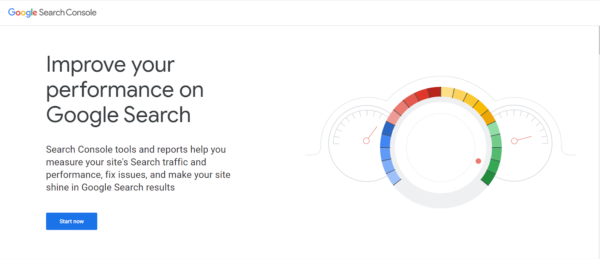
When it comes to attracting high-quality traffic to your website, great SEO is essential. SEO, or search engine optimization, is the process of optimizing your brand website to rank high in relevant searches. The goal is to get your content to the top of results pages related to your service or product. When your website appears high within a search, you gain more visibility online.
Whether you run a financial advising business or a daycare, SEO is an important part of your online marketing strategy. Learning how to measure SEO results can be crucial to your success. This article will cover important SEO topics, including:
- How to measure SEO results
- Essential metrics to track
- How long it takes to measure SEO
- Tools to use for tracking SEO
How to measure SEO results
Any SEO tips for beginners will tell you that knowing your SEO numbers is necessary. Without measuring your SEO results, you’re flying blind, creating content with no real idea of how it impacts your business.
To see your SEO rankings and results, you can utilize many online tools. Search engines like Google provide intuitive tools that can help maximize your website’s impact. To gain personalized insights into your SEO results, Constant Contact offers built-in SEO tools that make it easy to measure and improve your SEO performance.
Essential metrics to track
Hundreds of metrics impact how websites rank according to Google’s search algorithm. Attempting to track too many ranking factors can make it challenging to gain insights from your measurements. Instead, measuring just a few key metrics will help guide your online marketing strategy.
Organic Traffic
When a potential customer searches using a question, word, or string of keywords, they see a results page. This list displays Google ads as well as pages most related to their query. The number of visitors who find your website via search engine results is considered organic traffic.
Visitors finding your brand through organic-search sources is a strong indicator that your SEO strategy is working. A high rate of organic traffic is often good for business because searchers tend to be looking for a specific product or service. If you provide what they’re looking for, there’s a good chance you’ll gain loyal new customers.
Keyword ranking
Any term that’s searched for via a search engine and generates a results page is considered a keyword. To achieve a positive keyword ranking, your content must be optimized to outrank other results for the same keyword.
You can easily track your keyword ranking by:
- Doing a Google search for keywords relevant to your brand
- Making note of where your website ranks compared to your competitors
- Conducting subsequent Google searches to monitor your progress
To gain a better understanding of which keywords you should be using and how competitive they are, use Google’s free keyword planning tool. For any keyword you choose, your goal is to rank on the first results page and as close to the top as possible. Many people click on the very first search result they see — your proximity to that brand can have a huge impact on your organic traffic numbers.
SERP visibility
For every keyword, Google generates a search engine results page, also known as a SERP. In addition to organic results and Google ads, the results page includes SERP features. Sometimes called enriched search features, SERP features often include:
- “Also asked” questions
- Knowledge panels
- Image packs
- Google maps entries
- Reviews
- Videos
SERP features can lend authority to the searches in which your website appears. Track this metric by conducting a Google search of your relevant keywords and exploring the available SERP features.
Click-through rate
Your click-through rate is determined by the percentage of users who click on your website after landing on the search engine results page. For example, if your brand appears 1,000 times within a week and 100 people click on your site, the click-through rate, or CTR, will be 10%.
Monitoring your click-through rate is an excellent way to:
- Determine how effective your title tags are
- Track engagement with your meta description
- Gain insight on how attractive your brand is to searchers
Bounce Rate
Keeping in mind the goal of converting website visitors into customers, you’ll want to maintain a low bounce rate. The bounce rate measures the percentage of visitors who leave your site without engaging beyond their initial click. According to Google Analytics, a visit is when the user interacts with more than one landing page.
Tracking your bounce rate can help demonstrate positives and negatives in:
- The effectiveness of your lead magnets
- The appeal of your content
- The ease-of-use of your website design
When considering your bounce rate, be sure to analyze your engagement from both desktop and mobile users.
Backlinks
Backlinks are a powerful factor when it comes to optimizing SEO. A backlink connects one website to another. For example, if someone links to your website in their content, you have a backlink from their site — and vice versa.
Use SEO tools to track your backlinks. Keeping tabs on your active backlinks is a great way to optimize your content marketing tactics to positively impact your search engine optimization.
Time spent on page
Beyond avoiding the dreaded bounce, your goal is to provide valuable content for visitors to your website. One of the best ways to measure the impact of your content marketing is by measuring the average time spent on your page.
When a visitor spends a significant amount of time on your page it means they:
- Enjoy your content
- Find your resources valuable
- Are interested in your service or product
You can track the average time your potential clients spend on your site using Google Analytics. This tool helps you explore each page of your website individually and discover what aspects of your site are attracting the most visitors for the longest time.
The amount of time that’s desirable for visitors to spend on each page depends on the content. For example, a one-minute visit is perfect for a lead-magnet landing page but far too short for your blog.
Capitalize on positive time spent on your page by featuring an effective lead magnet. The goal is to connect with visitors who are engaging with your site — through email marketing, for example — to convert them into loyal customers.
Page speed
An often-overlooked metric to track is your page speed. Page speed can be a major contributing factor when it comes to low conversion rates and high bounce rates.
Consider how long you’re willing to wait for a page to load. In today’s fast-paced world, visitors will quickly abandon a site that’s slow to load. Google’s PageSpeed Insights make it easy to measure the speed of your site. The range of scores include:
- 100. If your page scores a 100%, it’s highly efficient.
- 90 and above. Sites that score above 90% are in great shape and are unlikely to cause visitors to bounce.
- Between 50 and 90. If your website lands between 50% and 90% on PageSpeed Insights, it needs improvement to boost customer engagement.
- 50 and lower. Websites that score 50% and under are likely losing visitors due to their slow page speeds.
Conversion rate
Your conversion rate is the culmination of your SEO strategy. Arguably the most important metric for measuring your website’s impact on your business, your conversion rate is the percentage of visitors that convert to paying customers.
For example, when a visitor to your site makes a purchase from your online store, they’ve just converted to a customer. You’ve created your website to showcase your brand, products, and services — positive conversion rates confirm that your website is fulfilling its purpose.
Track your conversion rates with Google Analytics and Constant Contact’s SEO tools.
How long does it take to measure SEO?
As with any aspect of building your business, developing a great SEO strategy takes time. Increasing visibility and rank in online searches requires planning, monitoring, adjusting, and more monitoring.
SEO strategy is never complete! You can continue improving your website and its SEO indefinitely.
However, if you’re in the process of overhauling your website with hopes of quickly boosting your SEO, a realistic timeline depends on the quality of your SEO strategy and the way you implement it in your business. With constant attention and a well-researched strategy, you may start seeing results within several months.
When it comes to creating meaningful change, perseverance is key. Remember that great search engine optimization processes include:
- Researching keywords
- Monitoring engagement with your website
- Making informed decisions about how to improve your SEO
- Tracking changes in your engagement
- Implementing more changes
- Repeating the process as you grow your business
Tools to help you track SEO
Fortunately, there are plenty of tools for measuring your SEO results. Many of them are offered by search engines to help elevate your SEO efforts on their platform. Helpful tools include:
Bing Webmaster Tools
If you’re interested in tracking how your website is performing on a search engine other than Google, Bing Webmaster Tools can help you uncover opportunities for growth.
Google Search Console
Google Search Console is a free online tool that helps you navigate the long-term process of building your SEO. GSC provides a long list of valuable reports that help you determine your user engagement, opportunities for improvement, and any errors or glitches on your pages.

Lighthouse Audit
This automated tool by Google allows you to measure the accessibility and performance of your website. Lighthouse illuminates details like speed and ease of navigation.
PageSpeed Insights
Don’t lose visitors to slow page speeds! PageSpeed Insights gives you a clear view of the speed at which your website loads so you can improve your site’s problem areas.
Mobile-Friendly Test
With so many people reliant on their mobile devices, it’s more important than ever that your website is mobile-responsive. Reach more people when they need you most by testing your website’s mobile responsiveness on Google and making adjustments when necessary.
Constant Contact SEO tools
Beyond Google’s own collection of resources, Constant Contact offers powerful built-in SEO tools that help you measure your results and level up your SEO performance. Constant Contact’s tools empower you to:
- Monitor and improve your rankings
- Find errors and trouble spots on your website
- See how you stack up against competitors
The bottom line
Whether you’re a blogger looking to increase your readership or a beauty brand hoping to earn more customers, you’ve put hours of hard work into crafting your own brand website. To get the most value out of all that effort, it’s important that you invest time into building your SEO.
Search engine optimization is a long-term commitment that can provide exponential growth for your business — when used correctly. When you take the time to monitor your SEO results and keep optimizing over time, your business will reap the rewards.
Now that you’ve learned how to measure SEO results, which metrics to track, and which tools to use, check out this comprehensive SEO overview to dive deeper into the complex world of search engine optimization. To learn how SEO comes together with your online marketing strategy, head to The Download, a free marketing guide for professionals from Constant Contact.





